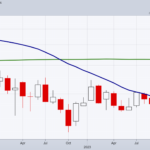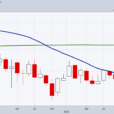
 Image courtesy of 123rf.com
Image courtesy of 123rf.com
In Q1 2024, the US crossed the historic milestone of paying over $1 trillion on interest payments. As a consequence of an unprecedented $5 trillion money supply boost since 2020, the US experienced an equally rapid inflation rise not seen since the 1980s.Likewise, the Federal Reserve then engaged in the fastest rate hike since the 1980s, causing it to pay more in interest. Concurrently, by October 2023, the USG had already tallied a $1.7 trillion budget deficit, making it 6.3% of gross domestic product (GDP).Since inflation appears more resilient than expected, Friday’s core Personal Consumption Expenditures (PCE) index rose to an annual 2.8% in March (vs 2.6% expected), leaving the Federal Reserve in a bind. The 10-year/2-year Treasury spread has been steadily rising. Interlinked, the Fed is less likely to cut interest rates despite historic interest payments and inflation if there is a sustained lower demand for Treasuries. The central bank then has to balance huge budgetary deficits and inflation reignite.
“Huge fiscal spending, the trillions needed each year for the green economy, the remilitarization of the world and the restructuring of global trade—all are inflationary,”
JPMorgan Chase CEO, Jamie Dimon, in April’s letter to the bank’s annual shareholders.
For investors, this means restructuring portfolios for assets that benefit from inflationary pressures. Here is what to look for across three asset category types.
Commodities
As the tampered money supply loses value, manifesting as inflation, tangible assets with intrinsic value appreciate. SPDR Gold Trust (GLD) and iShares Silver Trust (SLV) have been going up, at 12.9% and 13.8% YTD respectively.Bitcoin (BTC) is even more scarce than precious metals. Although Bitcoin is a digital asset, it is physically grounded in an extensive computing network of energy and hardware assets. Further, over 93% of Bitcoin’s firmly fixed supply of 21 million BTC has already been mined.After the completed fourth halving, Bitcoin’s inflation rate is now at 0.85%, significantly lower than the Fed’s ideal target for USD at 2%. Year-to-date, Bitcoin (BTC) has drastically outpaced both gold and silver at 51% returns.Agriculture products and farmland assets perform well in the middle ground between precious metals and Bitcoin. The Invesco DB Agriculture Fund (DBA) yielded 25.3% returns year-to-date.
Real Estate
Just as intrinsic agricultural products rise in USD-denominated value, so does the construction material for housing. Having limited supply amid mass immigration generates higher rents, which landlords can tweak according to higher inflation.Real estate investment trusts (REITs) with shorter-term leases of 1-2 years perform particularly well as they can keep up with the inflation rate. For investors, this combines well with regulatory requirements for REITs to pay 90% of taxable profits to shareholders as dividends. That’s because they don’t have to pay corporate income tax. Case in point, Arbor Realty Trust (ABR) gives out a 13.72% dividend yield at $1.72 annual payout per share. With the exposure of 1,000 ABR shares for $12.84 per share (appreciated 23% over one year), investors would receive a $1,720 annual payout at very low risk.Lastly, because REITs can diversify their real estate portfolio, they resist market swings and the Fed’s monetary policies regardless of direction.
Treasury Inflation-Protected Securities (TIPS)
TIPS can adjust their interest payments and principal according to the consumer price index (CPI) moves for investors looking for the absolute safest inflation hedge available. Although this guarantees the bond’s original value at maturity, TIPS doesn’t gain value as expected from stocks.Moreover, if newly issued TIPS have better yields aligning with rising interest rates, older TIPS will underperform against traditional long-term Treasuries. For instance, iShares 0-5 Year TIPS Bond ETF (STIP) returned 0.87% year-to-date, while giving an annual dividend payout of $1 per share, at 1% dividend yield.By the same token, TIPS’ minimized wealth-building potential is the cost of its protected hedge against inflation. In the era of rapid money erosion, commodities and infrastructure stocks for AI generative content, such as Nvidia (Nasdaq: NVDA) and AMD (Nasdaq: AMD), are better-balanced hedges. More By This Author:Alphabet, Microsoft Beat Q2 Expectations Driven By AI, Cloud Growth
Chevron’s Mixed Q1: $2.93 Adj. EPS, $48.72 B In Revenue
Microsoft, Alphabet To Report Earnings: What To Expect















